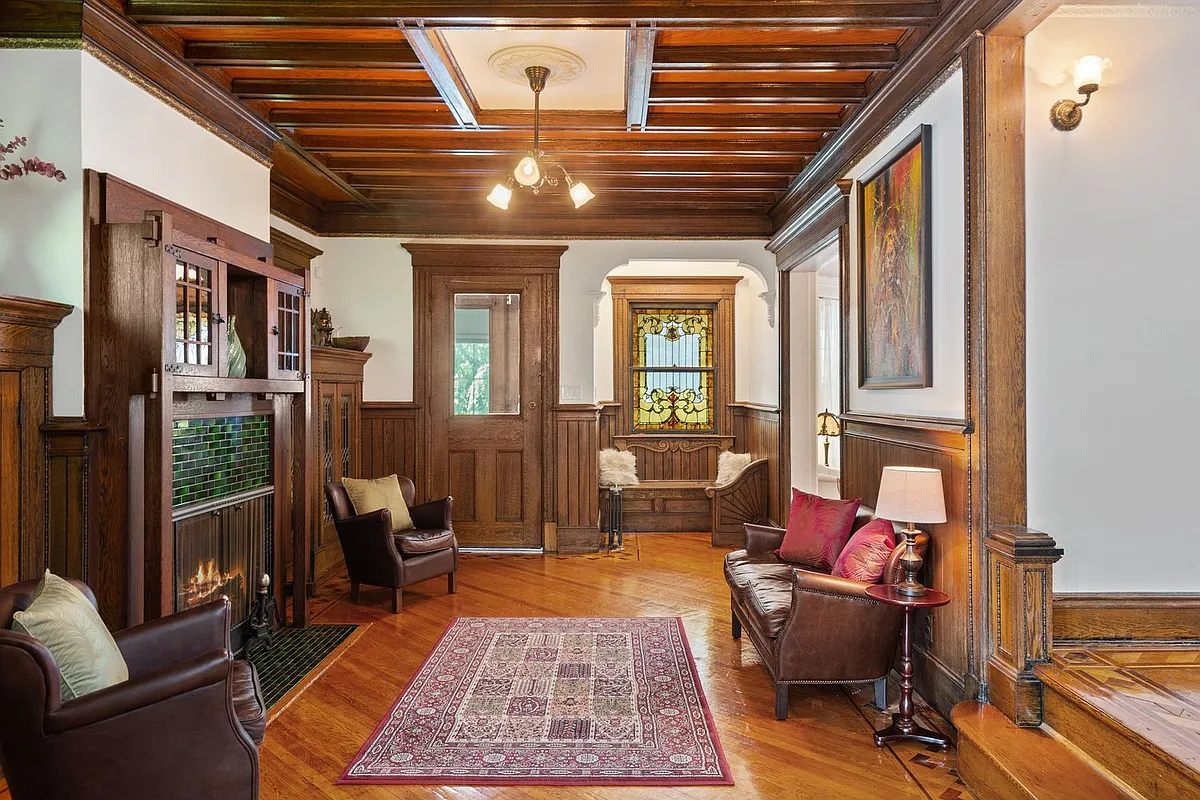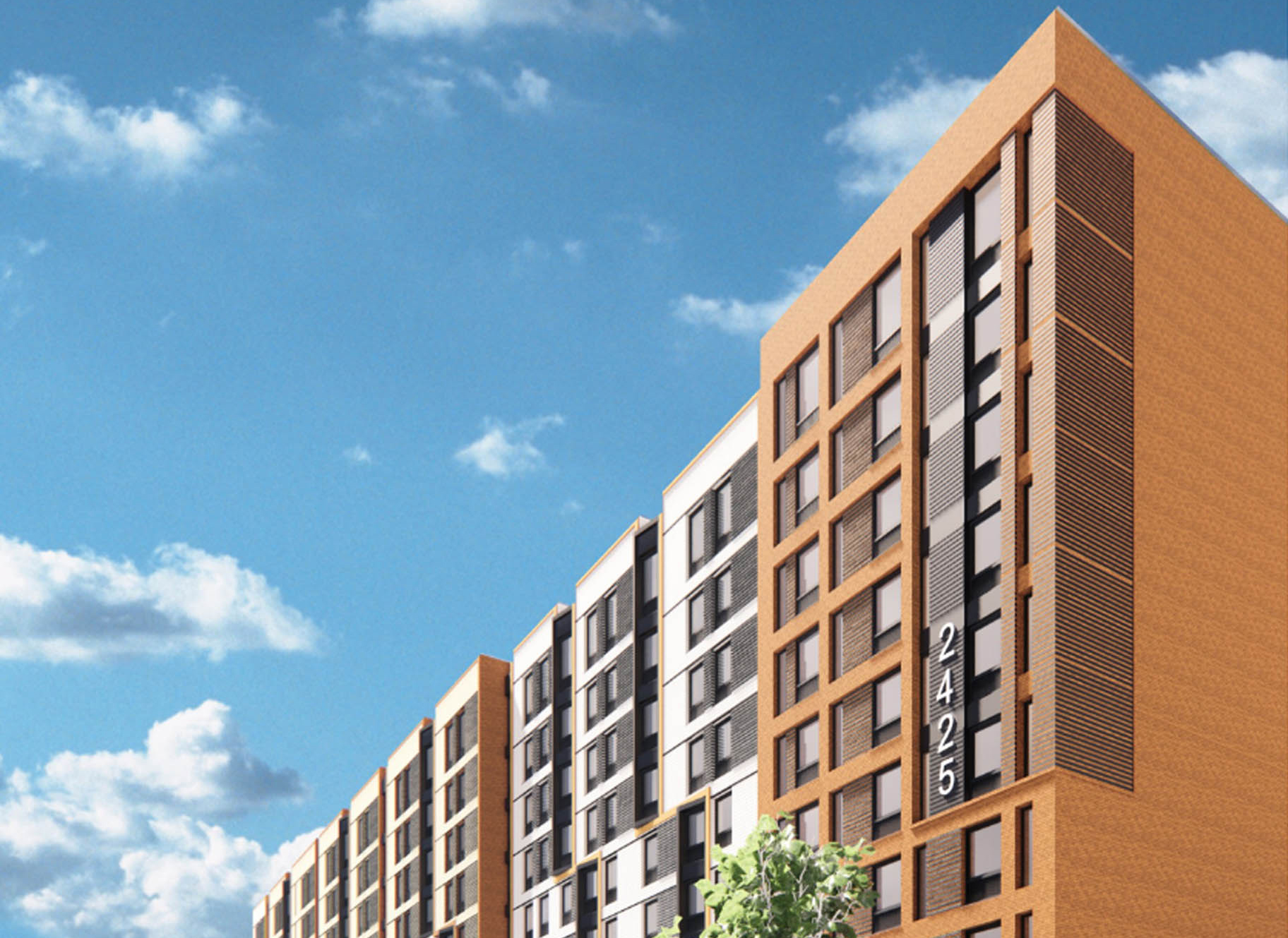A Couple of Sales
PROSPECT PARK SOUTH $1,260,000 169 Stratford Road 103-year-old center-hall colonial; front porch, quartz counters, commercial-grade appliances, family room, den, pocket doors, deck, 50-by-100-foot lot; taxes $4,512; listed at $1,260,000. Broker: Mary Kay Gallagher. Listing here; OHP here. PROSPECT-LEFFERTS GARDENS $710,000 325 Fenimore Street Three-family brick house, 3,240 square feet, with two-bedroom, two-bath unit under two…


PROSPECT PARK SOUTH $1,260,000
169 Stratford Road
103-year-old center-hall colonial; front porch, quartz counters, commercial-grade appliances, family room, den, pocket doors, deck, 50-by-100-foot lot; taxes $4,512; listed at $1,260,000. Broker: Mary Kay Gallagher. Listing here; OHP here.
PROSPECT-LEFFERTS GARDENS $710,000
325 Fenimore Street
Three-family brick house, 3,240 square feet, with two-bedroom, two-bath unit under two three-bedroom, two-bath units with balconies; home features garden and parking. Taxes $3,000. Asking price $749,000, on market one week. Broker: Rodolfo Lucchese, The Corcoran Group.
Residential Sales Around the Region [NY Times] GMAP
Just Sold! [NY Post] GMAP





Bizarre. It’s not like these Fedders houses are either (a) McMansions or (b) cheap. These Fedders houses are not desirable. Get outside NYC, there are zillions of more attractive, brand new, shiny homes that appeal to loads of people who don’t like old houses and wouldn’t like a Fedders house either. These look like schools and orphanages I used to build on missionary trips.
About incentives to build better, there already is incentive to build better and nicer but that doesn’t mean all developers understand or embrace that. These Fedders style buildings are being built because there is an especially large community of cheapo developers in this borough who strive to make a minimal investment first and foremost. That’s all they care about; they’re not responding to trends in the market nor do they care about appealing to the new wave of buyers in brownstone Brooklyn. The concept of larger profit after larger investment by appealing to a different market is totally lost on them. They’d never spend what it takes to hire a decent architect. There are buyers for these condos as Chaka describes (sounds like my first-generation FIL who is the Anti-Aesthete he cares so little about design). The recession might keep buyers away but not the design. The only disincentive the market really offers is for the land in one’s neighborhood to become too expensive for these bottom-line dudes.
BTW, not that I’m in love with it, but this one is not as bad as a lot of these buildings in Brooklyn. At least the windows are large and nice unlike the typical tiny postage stamp size window on these things. Where you see an ocean of brick and then one or two tiny windows. Baffling.
“I know from experience that Brownstones and Victorian frame homes with structural/roof issues can be just as, if not more troublesome and expensive to repair than a newer home. That has everything to do with aesthetics.”
How does this have anything to do with aesthetics? I agree the preference for one look over another does, but structural/roof issues?
The only consolation in seeing these hideous things pop up all over is knowing that they are too poorly built to stand up for 100 years — I’ll be long gone but at least future generations won’t have to look at them, although g-d knows what new crap the marketers to people who like “new, shiny” things will have come up with by then.
I am sure that they did have inspections. While I agree that homes were definitely better constructed in the past, older houses comes with their own share of headaches, especially if they have not been well maintained. I know from experience that Brownstones and Victorian frame homes with structural/roof issues can be just as, if not more troublesome and expensive to repair than a newer home. That has everything to do with aesthetics.
Unfortunately, Chaka, most of these houses are poorly constructed and your friends who love them may be in for some headaches in the near future.
Whereas the walls of older buildings are usually two or three layers of bricks, modern construction is concrete blocks with only one thin layer of brick over them (or sometimes, as in the case of side and back walls, not even that!). Concrete is pourous and unless the builder has installed weepholes, directing water out from between the blocks, mold and humidity problems may begin.
Additionally, these houses are much less well-insulated than traditional brick construction, meaning increased energy costs.
Finally, that valley in between the two peaked roofs will collect snow in the winter, which will melt. If the construction is good it will be directed off of the roof, but if not the roof will leak.
I certianly hope your well-qualified friends who love these houses had the ones they bought inspected for these and other problems beforehand.
And that has nothing to do with aesthetics.
Chaka,
It’s one of a million reasons not to buy a brownstone, but what you said is very much true. That doesn’t mean though that 2nd, 3rd [and so on] generation Americans only buy brownstones. I like brownstones myself but what’s the overall percentage of them in US, %5 to %10?
In my post on Friday I stated that while I think that these houses are ugly, I have many friends who love them. They were more than qualified purchasers and most put down 20% or more to purchase similar homes throughout the city. They are mostly first generation Americans from all over the world and they would never even think of buying an old house. One co-worker told me that after visiting my home for the first time that she thought that I must have been mishandling my money because I owned such an old house! She simply couldn’t understand why I would buy an “old house with all that wood all over and nothing shiny.” She sends photos of her three family Fedders home back to her family so that they can see how well she is doing. I don’t think a Brownstone would give the appearance of prosperity in her eyes. I am certain that her next stop is some mini-mansion in New Jersey or on Staten Island – filled with shiny stuff. So she and others may be unsophisticated by our standards but I would not assume that they are unqualifed because they prefer new ugly houses.
as someone who has lived around the country I can say those things would be ugly anywhere.
Gravis,
“Though cowards flinch and traitors sneer, we’ll keep the red flag flying here”
Bob Marvin
Commissar for preservation of Victorian details 🙂